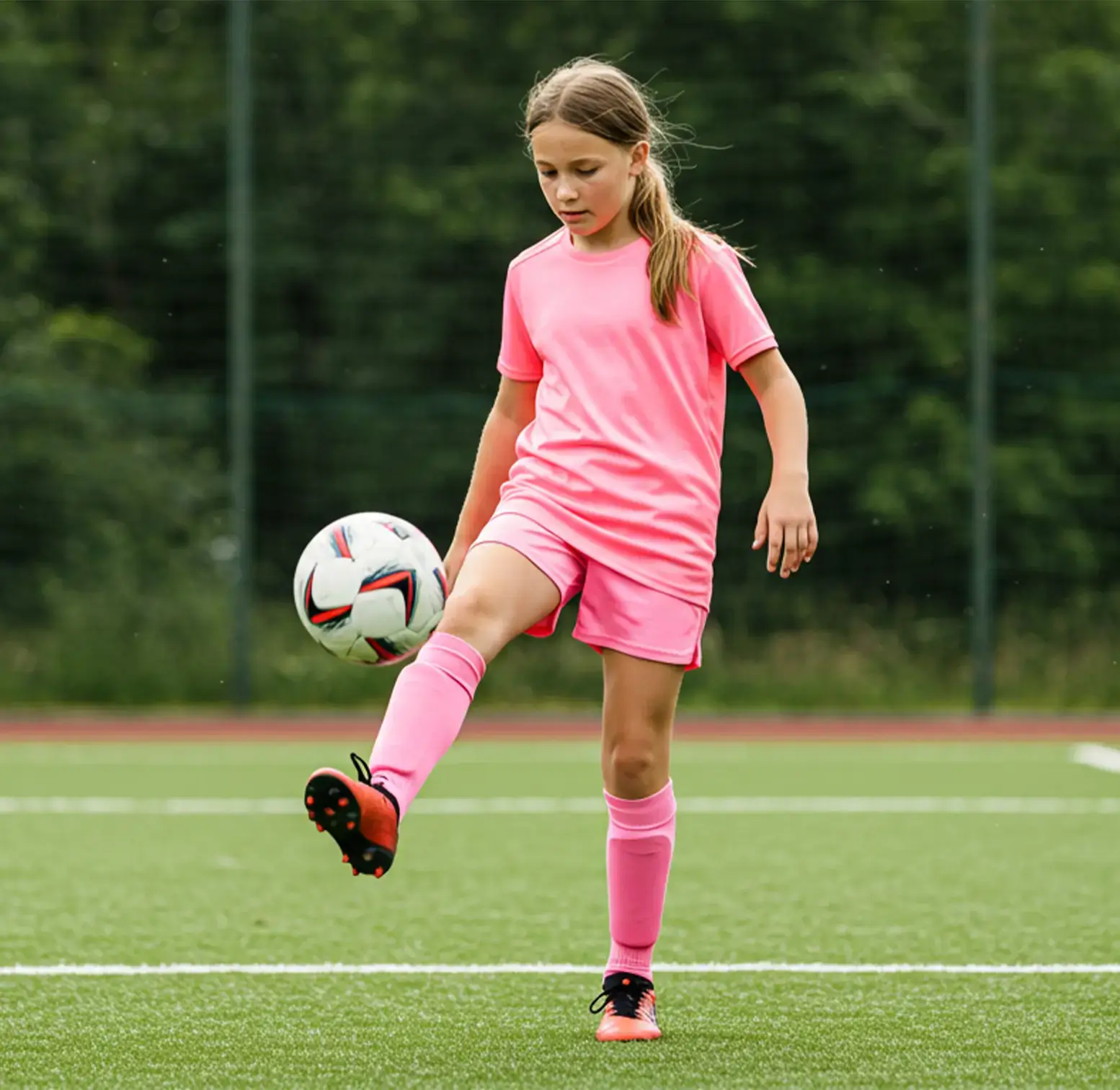How to Measure Your Child’s Soccer Progress

CRFC BLOGS
LATEST BLOGS & NEWSLETTERS
How to Measure Your Child’s Soccer Progress
As a parent, it’s natural to wonder, “Is my child actually getting better at soccer?”The truth is, growth doesn’t always appear as more goals or wins. Real progress often hides in the details -confidence, ball control, and decision-making.
But you can track progress without being a coach or expert. Let’s break it down in simple, parent-friendly steps.
Look Beyond the Scoreboard
Scoring goals is fun, but it’s not the only way to measure development. In fact, early success in youth sports often comes from size or speed, not skill or soccer IQ.
Instead, watch for signs of real growth:
- Do they have better ball control in tight spaces, even if under pressure?
- Are they making quicker decisions?
- See the improvement in positioning.
- Are they more confident in accepting and doing challenges?
How do they demonstrate improved communication skills with their teammates, even in simple tasks such as calling for the ball?

Track Physical Milestones
Performance in soccer is built on movement, coordination, and endurance. Try tracking progress monthly with a simple test:
- Track Speed: Use 10-yard and 20-yard sprints.
- Track Agility: Set up cones and time their shuttle run.
- Track balance & coordination: Can they juggle longer or hold a 1-leg stance during drills?
- Track Stamina: Are they still active and sharp in the final 10 minutes of play?
Physical progress shows up in subtle ways. Keep a simple notebook or video log to see the trend.
Break Down Technical Skills
Instead of “Can they dribble?” ask: “Can they change direction with close control at speed?”
Track progress:
- Dribbling: Use cones and time how long it takes to zigzag cleanly. Watch for fewer touches off target.
- Passing: Count how many accurate passes they can make.
- Shooting: Track how many shots hit the target in 10 tries.
- First Touch: Toss or pass the ball and count how often they control it cleanly.
Make it fun with weekly “beat your best” challenges.

Use a “Before and After” Video Log
Sometimes the best progress tracker is already in your pocket, your phone.
Create a short video every 1–2 months:
- 30 seconds of juggling.
- Dribbling through cones.
- Receiving and passing.
- One-minute game footage highlight.
Then re-watch and compare, sit with them, help them understand where they fall behind, and cheer them up for their efforts. Kids see their growth, which builds motivation and self-belief.

Watch Their Soccer IQ Grow
Soccer is a thinking game. As players mature, their decisions matter more than their moves.
Look for smarter choices:
- Spacing: Are they finding space rather than chasing the ball?
- Reading plays: Do they anticipate passes or cut off options?
- Support: Do they back up teammates instead of standing still?
Switching play: Do they see both sides of the field?
Ask the Right Questions After Games
Skip the typical “Did you win?” Instead, ask questions that spark reflection and reinforce progress.
Ask these Questions instead:
- “What’s one thing you did better today than last game?”
- “Did you try something new that felt challenging?”
- “Where did you help your teammates the most?”
- “What moment made you feel confident today?”
Your words shape their mindset. Focus on effort, progress, and learning, not perfection.

Check for Consistency in Practice and Games
Improvement means doing the right things more often, not just once.
Track if your child:
- Applies learned skills from practice into real games
- Performs well under pressure or against stronger opponents
- Shows up focused and motivated, not just “going through the motions”
- Responds to feedback or tries to fix mistakes
Consistency means readiness. Repeating the right habits is the best sign of lasting progress.
Lean on Feedback from Coaches
Youth coaches observe growth differently from parents. They see the why behind a player’s decision, not just the outcome.
To measure progress, ask coaches about:
- Tactical awareness.
- Mental resilience under stress.
- Technical improvement across training blocks.
- Leadership or communication in team settings.
- Willingness to work on weak areas.
Don’t just ask, “How are they doing?” Ask, “What’s the biggest change they’ve seen?”

Celebrate their Growth
Soccer development isn’t a straight path. Kids plateau, grow, dip, then leap again.
Your job as a parent:
- Encourage their effort over outcome.
- Praise bravery and consistency.
- Celebrate small wins like new moves, good sportsmanship, and great positioning.
The goal is to build a love for the game that lasts.
Conclusion:
You don’t need to be a soccer expert to measure your child’s growth. You just need to watch, ask, track, and cheer them up.
From first touches to smart plays, real progress is about becoming a better player and person over time. You’re not just raising a soccer player. You’re helping build confidence, resilience, and love for the game. And we really appreciate that!
FAQs
How can I tell if my child is improving their ball control?
Improved ball control shows up as cleaner touches, quicker turns, and fewer giveaways under pressure. You can track this using simple cone dribbling or juggling routines. For more structured development, explore these ball control tips for youth players that build coordination and confidence at every level of play.
What role do soccer camps play in player progress?
Soccer camps offer focused repetition, peer learning, and new coaching perspectives that spark growth. Even a few days of camp can reinforce key habits. Explore the benefits of youth soccer camps to see how they help players accelerate skills like passing, teamwork, and decision-making in fun, game-like settings.
Are passing drills a good way to measure progress?
Absolutely. Passing drills highlight both technique and soccer IQ. Track how often your child completes accurate passes under pressure or in motion. These youth soccer passing drills can help you spot improvements in control, timing, and field awareness across training sessions or games.
What shooting signs show my child is improving?
Improved shooting means better body control, shot selection, and accuracy, not just power. You can track their progress with repetition-based shooting sessions. These youth soccer shooting drills help players hit targets consistently, improve technique, and build confidence in front of the goal.
How do I know if my child is developing soccer awareness?
Soccer awareness includes spacing, timing, and making smart choices under pressure. One sign is when your child starts anticipating plays instead of just reacting. Coaches often teach these instincts using youth soccer tactics, which help players read the game better and contribute more effectively to team play.
What fitness signs indicate soccer progress?
If your child finishes games strong, recovers faster, or wins more one-on-one duels, their conditioning is improving. Short agility drills and repeated sprints can help track this over time. These youth soccer conditioning drills are a great way to build endurance and test performance gains at any age.

Did you find this useful?


